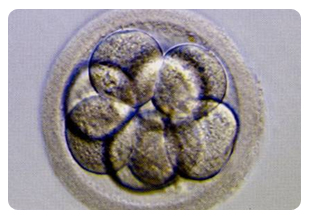
Couples at high risk of transmitting an inherited disease to their offspring, have the option of undergoing prenatal diagnosis to allow the detection of the genetic disorder in fetus. However, if the analysis reveals a genetically affected fetus the only options available to couples are to have a child with a genetic disease or to terminate the affected pregnancy.
This is a difficult and often traumatic decision, especially in advanced pregnancies. Many couples may also experience repeated pregnancy terminations in attempts to conceive a healthy child and might feel unable to accept further affected pregnancies. In some cases this may also not be a viable option for religious or moral reasons.
Preimplantation genetic diagnosis (PGD) has been introduced as an alternative to prenatal diagnosis, to increase the options available for couples who have a known genetically transmittable disease, providing reassurance and a reduced anxiety associated with reproduction.
PGD can be considered as a very early form of prenatal diagnosis. Its intended goal is to diagnose a specific genetic disease on oocytes or embryos before a clinical pregnancy has been established, by selecting and transferring to the uterus only embryos resulted unaffected after mutation analysis. Consequently, PGD may spare the couple decisions regarding possible pregnancy termination, ensuring a pregnancy free of the disease under consideration.
PGD thus is an adjunct to assisted reproductive technology, and requires in vitro fertilization (IVF) to obtain oocytes or embryos for evaluation.
Following its first application in 1990 (Handyside et al., 1990), PGD has become an important complement to the presently available approaches for prevention of genetic disorders and an established clinical option in reproductive medicine. Since then, the numbers of centres performing PGD have risen steadily, along with the number of diseases that can be tested and new applications and methodologies are introduced regularly. The range of genetic defects which can be diagnosed has expanded dramatically and now includes numerical and structural chromosomal abnormalities, such translocations, in which it has proven to decrease the number of spontaneous abortions while preventing the conception of affected babies, and most of the common single gene disorders (SGDs).
The scope of PGD has also been extended to screening for chromosomal aneuploidies in IVF patients at increased risk including advanced maternal age and repeated miscarriage. More recently, HLA mathing, with or without SGD diagnosis, has been introduced with the aim of recovering compatible stem cells from cord blood at birth for transplantation to an existing sick child (Fiorentino et al., 2004, 2005; 2006).